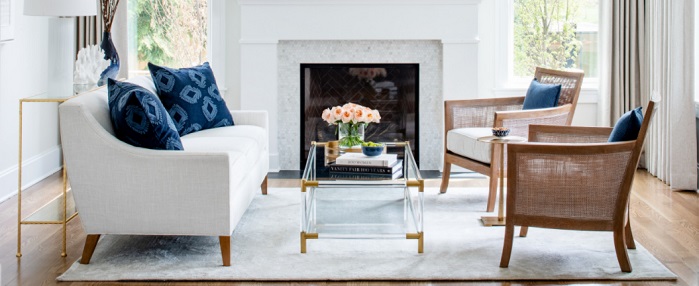If you’re planning on redecorating, chances are you’ve spent a good amount of time browsing, scrolling, and flipping through pictures of all sorts of interiors to find the right look. But as easy as it is to find magazine-worthy rooms you love, it’s often quite hard to replicate them on your own. A good eye for color and some savvy shopping experience can help, but if you’re going without a designer, my best advice is this: keep it simple with a limited palette.
Why It Works
The hardest thing to get right without professional help is your color scheme. Especially if you don’t paint often and are buying lots of the elements of your room online, your perfect paint swatch, upholstery, and area rug might not come together quite the way you imagined. The more colors you try to match, the more you risk an unexpected color clash. That’s why even many of the pros stick to limited palettes. Choosing a monochromatic color scheme is a remedy for basically all color matching woes. That means you should pick a single color and use only tints, tones, and shades of that color. In other words, add white, black, or gray, but don’t change the color itself by mixing it with other colors. The closer the match, the better.
All-white interiors aren’t as popular as they used to be, but will give you a flawless and elegant backdrop for any room (especially with nice moulding!) and help a limited palette take center stage and stand out. Better still, a pure white won’t clash with anything, so it’s a safe choice if you’re hoping to experiment with color elsewhere in the room to grow your interior design chops. Wood and warm metal elements will cut the chill in a very white-dominant space, and can help draw the eye to certain areas or emphasize detail work. Then, pick your accent color and apply for a look that’s easy to execute, but with a 100% professional feel.
Get The Look
Start with a fresh coat of white paint to offset your wood floors. Paint over any moulded details in the same color for a classy but modern-feeling finish, and enhance it with white sconces for more depth. Get even more texture from a white lamp and accent pieces like white coral. A white area rug will tie together your furniture set; gold curtain rods and a nice chandelier will draw attention to the moulding. Aim to pair white and wood for your furniture, like this loveseat and chair, but choose mismatched pieces to keep the look fresh. A gold and glass or acrylic console and coffee table will add color without making your space feel overcrowded. Finish with your accent color: artwork, throw pillows, and little trinkets will add the vibrancy the room needs. Bonus: these small pieces are easy and inexpensive to change out, for your next project!
When you decide to tackle a design project on your own, it’s always a risk that the result will feel a little piecemeal. Choosing a limited palette can help ensure your space will have a sense of unity. Starting with white walls might seem counterintuitive, but can help you build the confidence you need to try out bolder, riskier palettes in the future.

